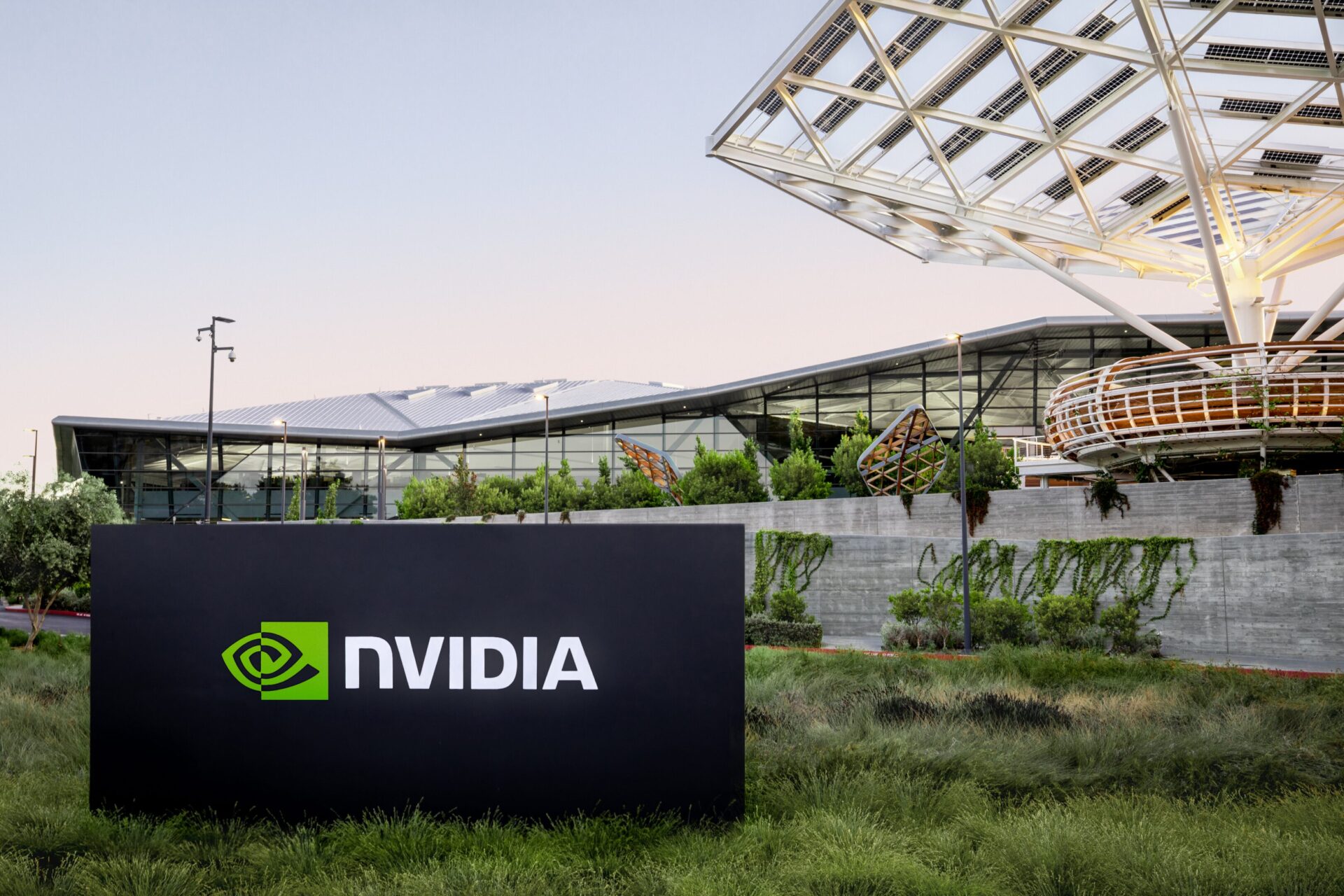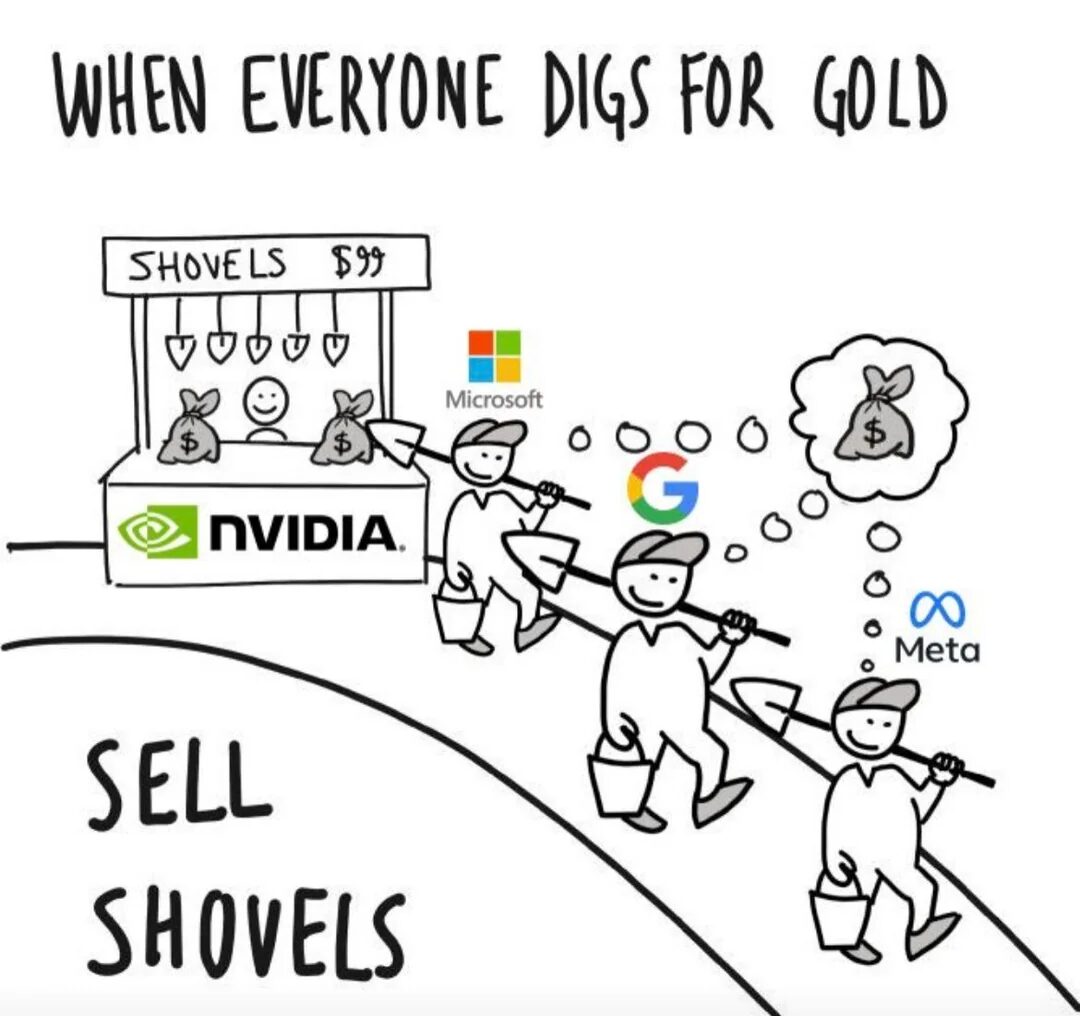Remember the days when graphics cards were just for hardcore gamers, churning out impressive visuals on your screen? Well, buckle up, because the landscape has dramatically shifted. One company, Nvidia, has transformed from a gaming graphics specialist to a tech titan, recently holding the coveted title of the world’s most valuable company. So, how did this silicon sculptor achieve such a meteoric rise?

The Powerhouse Within: Unveiling the Magic of GPUs
The secret weapon in Nvidia’s arsenal? The Graphics Processing Unit (GPU). Originally designed to accelerate the rendering of complex graphics in video games, these chips hold a surprising secret: they excel at handling massive amounts of parallel calculations. This ability, once used for creating stunning visuals, turned out to be the missing piece in the puzzle of Artificial Intelligence (AI).
Think of AI as a complex learning machine, able to analyze vast amounts of data and make intelligent decisions. Training these AI models requires immense computational power, and that’s where Nvidia’s GPUs step in. These chips act like tireless workers, crunching numbers at lightning speed, allowing AI models to learn and evolve.
Riding the AI Wave: A Perfect Match for a Booming Industry
The rise of AI has been nothing short of phenomenal. From facial recognition software to self-driving cars, AI applications are rapidly transforming our world. And guess who’s perfectly positioned to ride this wave? Nvidia, with its powerful GPUs, became the go-to hardware for training and running these complex AI models.
Imagine a tech giant like Google developing a revolutionary new AI language model. To train this model, they need immense computational power. That’s where Nvidia comes in, offering the perfect hardware solution with their GPUs. This symbiotic relationship between Nvidia and the AI industry has fueled their phenomenal growth.
The CUDA Advantage: A Software Powerhouse
But Nvidia’s dominance goes beyond just raw processing power. They’ve also created a powerful software platform called CUDA, which allows programmers to efficiently utilize the capabilities of their GPUs for AI tasks. Think of it as a special language that allows developers to speak directly to the GPUs, unlocking their full potential for AI applications.
This combination of powerful hardware (GPUs) and user-friendly software (CUDA) has created a formidable force in the AI world. Developers can now leverage the power of Nvidia’s GPUs with relative ease, further solidifying Nvidia’s position as the leader in AI hardware.
Beyond Gaming: Expanding Horizons and Applications
While gaming remains a significant segment of their business, Nvidia has successfully diversified beyond their initial niche. Their GPUs are now used in data centers, powering the cloud computing infrastructure that underpins many of the digital services we rely on daily.
Furthermore, Nvidia’s technology is finding its way into self-driving cars, where real-time data processing is crucial. They’re also making waves in the world of scientific computing, accelerating complex simulations and research. This expansion into diverse applications has broadened their market reach and further fueled their growth.
Innovation is Key: Staying Ahead of the Curve
Nvidia isn’t resting on its laurels. They continuously invest in research and development, pushing the boundaries of GPU technology. Their commitment to innovation ensures they stay ahead of the curve, catering to the ever-evolving demands of the AI landscape.

This relentless pursuit of innovation is a key factor in maintaining investor confidence. As Nvidia continues to demonstrate their leadership in AI hardware, investors remain bullish, driving the company’s stock price and market value.
From Humble Beginnings to Tech Titan: The Nvidia Legacy
Nvidia’s journey is a testament to the power of innovation and adaptability. By leveraging their core technology and strategically positioning themselves in the heart of the AI revolution, they’ve transformed from a niche player to a dominant force in the tech world. Whether they retain their top spot remains to be seen, but their remarkable rise serves as an inspiration for any company willing to embrace change and push the boundaries of technology.
FAQs
1. Is Nvidia just for gamers anymore?
While gaming remains a significant market for Nvidia, their GPUs are now utilized in a variety of applications, including AI development, data centers, self-driving cars, and scientific computing.
2. What is the difference between a CPU and a GPU?
Both CPUs (Central Processing Units) and GPUs are essential components in a computer, but they handle tasks differently.
- CPU: Often referred to as the “brain” of the computer, the CPU is responsible for handling a wide variety of tasks, but one at a time. Imagine it as a skilled conductor, managing the overall flow of information within the system.
- GPU: In contrast, the GPU is a specialized processor designed for handling massive amounts of data in parallel. Think of it as a team of efficient workers, all tackling similar tasks simultaneously. This parallel processing power makes GPUs ideal for applications like AI and graphics rendering, where large datasets need to be processed quickly.
CPU vs GPU LSI Keywords: CPU vs GPU for AI, CPU vs GPU for gaming
3. Will Nvidia always be the leader in AI hardware?
The tech industry is dynamic, and innovation is constant. While Nvidia currently holds a strong position, competitors like AMD are striving to close the gap. The future of AI hardware leadership will depend on continuous innovation and the ability to adapt to evolving industry needs.
4. How can I invest in Nvidia?
If you’re interested in investing in Nvidia, you can do so by purchasing shares of their stock (NVDA) through a brokerage account. However, it’s crucial to conduct your own research and understand the risks involved before making any investment decisions.
5. Is AI the only reason for Nvidia’s success?
While AI has undoubtedly been a major driver of Nvidia’s growth, their success also stems from their commitment to innovation, strategic diversification into new markets, and a user-friendly software platform (CUDA) that unlocks the full potential of their hardware.
Read Also
- Six Truths and a Lie by Ream Shukairy.
- These Unpopular Excel Functions Will Automate Tedious Tasks
- Shocking Benefits of Chess Game: From Memory Boost to Stress Relief
- Flesh & Bone by Jonathan Maberry
- This Summer Work Abroad Program Lets You Explore the US & Build Your Resume
- For The Horror Fanatics: 5 Must-See Mike Flanagan Horror Classics
Conclusion:
Nvidia’s rise to the top is an inspiring story of a company that embraced change and strategically positioned itself at the forefront of a technological revolution. Their powerful GPUs, combined with a user-friendly software platform, have made them the go-to hardware for AI development and numerous other applications. While the future of the tech industry remains unpredictable, Nvidia’s commitment to innovation ensures they’ll be a force to be reckoned with for years to come.


